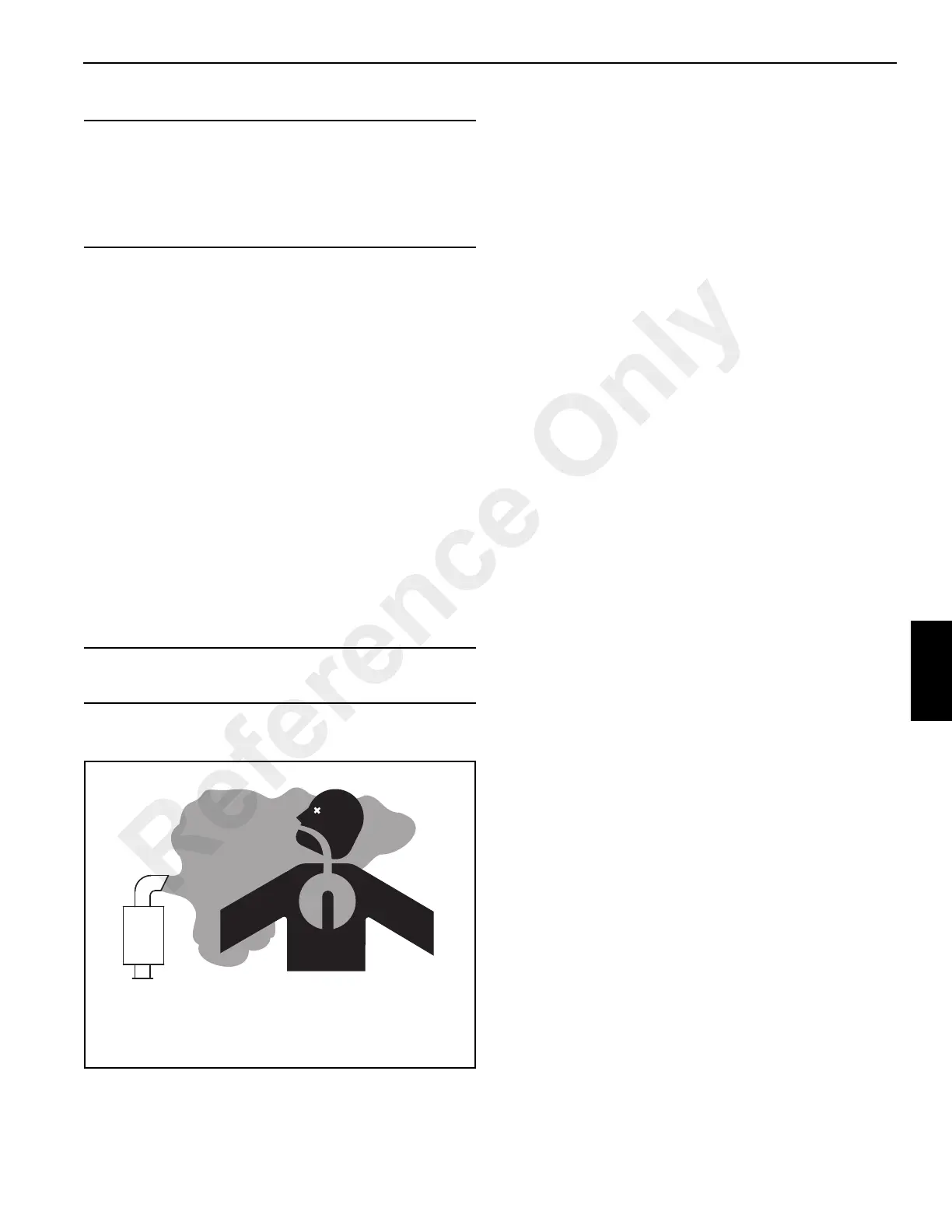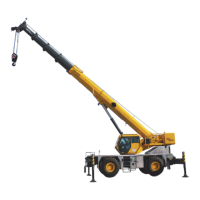GROVE Published 10-21-2010, Control# 198-04 6-13
5540F/YB5515 SERVICE MANUAL ENGINE AND ENGINE SYSTEMS
Gasoline Containing Alcohol
Many types of gasoline being sold today contain alcohol.
Two commonly used alcohol additives are Ethanol and
Methanol.
The GMC gasoline engine may be operated using gasoline
blended with no more than 10% Ethanol meeting the octane
specifications. DO NOT use any gasoline which contains
METHANOL.
Engine Air Intake System
Air for combustion is pulled through an air filter by the air
pump on the engine. Dust and foreign materials are removed
from the air by the air filter.
Replace or clean the air filter at the intervals given
Preventive Maintenance Section of the operator’s manual.
Make sure all clamps on the intake tube and filter are tight. If
dust or foreign materials enter the engine, permanent
damage can be caused to the engine.
Engine Exhaust System
Exhaust system components get very hot and can cause
severe burns.
The exhaust system is installed under the frame to minimize
the transfer of noise and vibration into the operator’s
compartment.
Annoying rattles and noise vibrations in the exhaust system
are usually caused by misalignment of parts. When aligning
the system, leave all bolts and nuts loose until all parts are
properly aligned, then tighten working from top to bottom.
When installing exhaust parts, make sure there is sufficient
clearances between the hot exhaust part and parts that
would be adversely affected by heat.
When installing an exhaust system, allow for expansion
when the system is hot.
Period maintenance of the exhaust system is not required,
However, it is advisable to check the condition of the system
when performing other maintenance on the crane.
Check the complete exhaust system for broken, damaged,
missing or miss-positioned parts, open seams, holes, loose
connections and other deterioration which could cause
exhaust fumes to seep into the operator’s compartment. Any
damaged areas must be corrected.
Electronic Fuel Injection System
General
Over the past 30 years, increasing regulations have made
electronic engine controls a cost-effective solution for
reducing emissions and improving fuel economy and
performance in passenger cars and trucks. Positive side
effects from the addition of electronics, include better
acceleration, improved cold start and hot start behavior and
improved power output. Many of the components that have
had extensive development and testing in passenger car
applications (e.g., fuel injectors, pumps, regulators, sensors,
etc.) are used directly on the industrial gasoline engine
installed in the Modes 5540F & YB5515 crane. When these
components are applied correctly, along with an electronic
control unit (ECU) designed specifically for industrial
applications, the result is a system which meets the
immediate needs of regulatory agencies.
The fuel injection system used on this Grove crane utilizes
high volume, state-of-the-art automotive components and an
ECU and throttle designed for industrial applications. The
system is very simple when compared with current
automotive complexity. The system fulfills the requirements
of the industrial engine user, by combining flexible fuel
control, electronic speed control and ignition control in the
same microprocessor.
Injection Strategy
The type of fuel injection used on this YB crane is classified
as Throttle Body Injection (TBI). This type of injection, also
known as single point injection, operates fuel injector(s)
located upstream of the intake manifold.
CAUTION
The use of gasoline with a lower octane than 87 AKI (91
RON) octane will result in serious damage to the engine.
Engine damage resulting from use of low octane gasoline
is considered misuse of the engine and will void the
engine warranty and the Grove warranty.
CAUTION
Never run the engine without an air filter installed.
w0002
EXHAUST FUMES CAN BE FATAL. When operating in
enclosed areas with a gasoline or diesel engine, provide
adequate ventilation.
FIGURE 6-10
Reference Only

